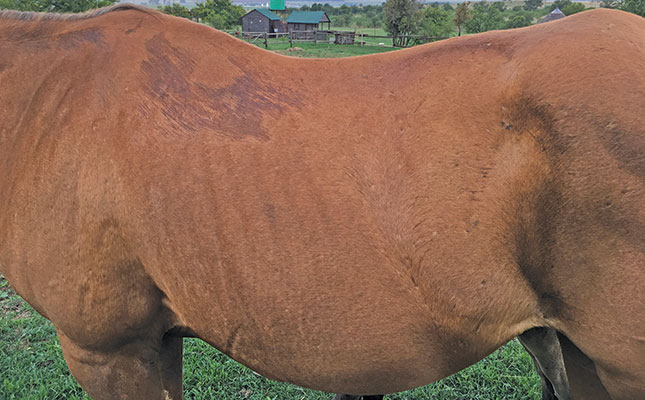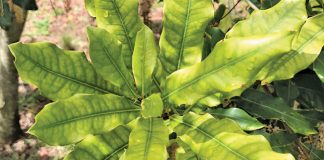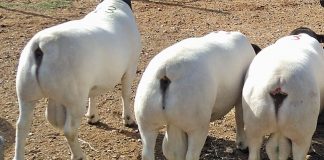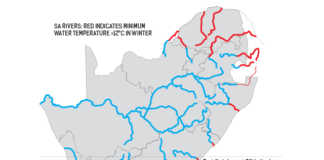
Photo: Dr Mac
Immune-mediated myositis (IMM) occurs when the skeletal muscles are damaged because of an immune-related reaction to a disease or vaccine.
Although previously diagnosed in dogs and humans, the causes and signs in horses were first described in detail in 2016. As it has been shown to be related to a specific gene, breeders can now have their stud animals tested.
The disease has been found mainly in American Quarter Horses, but also in English Thoroughbreds, Warmbloods and Arabians.
Horses with IMM, especially those with two copies of the gene MYH1, produce the protein 2Xmyosin. The immune system of an affected horse is stimulated to attack this protein in its own skeletal muscles after vaccination or infection with certain diseases, such as Streptococcus equi, S. zooepidemicus, and herpes 1. Certain vaccines, such as that used against equine influenza, have also been implicated.
Symptoms of the disease
The main sign of this genetically mediated muscle disease is a sudden loss of muscle mass, especially along the topline and in the hindquarters, usually following vaccination or an infectious disease.
The horse goes from looking like a show winner to a rescue case within two to three weeks. This can be embarrassing for an owner, who risks being reported to a welfare organisation for neglect.
Coupled with this is loss of appetite, listlessness, stiffness and a reluctance to move. A fever of 39°C to 40°C may occur, and blood tests will show a high level of white blood cells. Muscle enzymes (AST and CK) in serum samples were found to be elevated in more than 90% of cases studied.
Biopsies taken from muscles show infiltration with CD4 and T lymphocytes as well as breakdown and necrosis of muscle cells.
A retrospective US study showed that 32% of horses hospitalised with IMM had a second episode within five months. Deaths were the result of kidney failure due to severe muscle breakdown.
Symptoms last between several days and several weeks, and can be fatal. With proper care, horses can regain muscle mass within three to six months.
Treatment
Report sudden loss of muscle mass in your horse to a veterinarian and arrange for blood and serum tests. If the findings of these two are similar, IMM should be considered as a differential diagnosis.
Other causes of severe muscle loss include protein-energy malnutrition, mares in late lactation, and azoturia. However, the main difference between IMM and other causes of myositis is that IMM responds well to corticosteroids, intravenous fluids and supportive treatment.
The main diagnosic test is genetic, and this gene can be demonstrated in hair from an affected horse. At present, these tests are available only from Animal Genetics Inc. in the US.
If you are an American Quarter Horse breeder, you are advised to test your breeding mares and stallions, as several leading sires in the US were recently found to be positive.
Dr Mac is an academic, an equine veterinarian and a stud owner.











